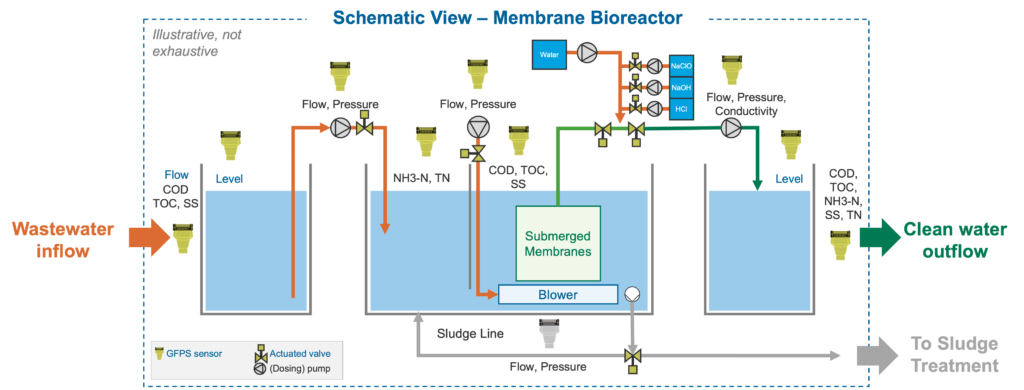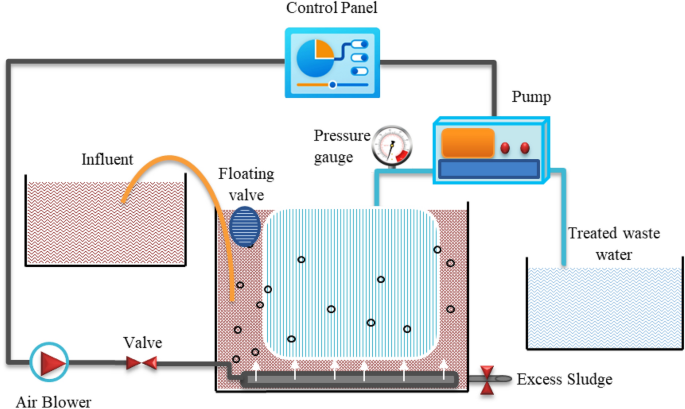Understanding the Basics of Membrane Bioreactor Systems for Wastewater Management
Understanding the Basics of Membrane Bioreactor Systems for Wastewater Management
Blog Article
Understanding Membrane Layer Bioreactors: The Future of Wastewater Treatment
Membrane bioreactors (MBRs) stand for a notable development in the area of wastewater treatment, incorporating organic procedures with advanced membrane layer purification to boost effluent top quality. As global water scarcity and strict regulative structures end up being progressively pressing problems, MBR modern technology supplies a reliable response with its ability to reduce impact and optimize source healing.
What Are Membrane Layer Bioreactors?

The core parts of MBR systems consist of a bioreactor where microbial activity happens and a membrane layer unit that filterings system the blended alcohol. This double functionality makes it possible for the synchronised deterioration of organic matter and solid-liquid separation in a single action. MBRs can run in both submerged and outside setups, with immersed systems being more typical as a result of their portable design and operational performance.
The adoption of MBR technology has actually gained traction in various applications, ranging from local wastewater treatment to industrial effluent monitoring. MBRs are particularly helpful in scenarios where area is stringent or limited effluent high quality requirements need to be fulfilled. By keeping a high concentration of bacteria within the bioreactor, MBRs boost the destruction of natural toxins, thereby generating higher therapy performances contrasted to conventional techniques.
Key Benefits of MBR Modern Technology
The integration of biological therapy with membrane filtering in MBR systems supplies various benefits that establish it besides typical wastewater therapy techniques. One of the main advantages is the boosted effluent top quality. MBRs properly get rid of suspended solids and pathogens, achieving greater degrees of purification that fulfill stringent discharge requirements and assist in water reuse applications.

An additional considerable advantage is the decreased sludge manufacturing. MBR systems generate less excess sludge, bring about lower disposal prices and a decline in ecological influence. The closed nature of the membrane layer system decreases the danger of odor exhausts and boosts overall process control.
Finally, MBRs are versatile and functional, making them suitable for numerous wastewater kinds, consisting of commercial and municipal sources. The capacity to integrate with sophisticated therapy innovations even more enhances their efficiency, making MBRs an encouraging solution for the future of wastewater management.
Difficulties and Limitations of MBRs
While MBR technology provides countless benefits, it additionally encounters a number of difficulties and limitations that can affect its widespread adoption. One significant challenge is the high capital and operational costs associated with MBR systems. The preliminary investment for membrane layer products and the required framework can be considerable, making it less accessible for smaller sized districts or sectors.
In addition, membrane layer fouling remains an essential issue that can decrease system performance and increase upkeep needs. Fouling takes place when solids, organic issue, or microbes accumulate on the membrane surface area, causing reduced leaks in the structure and requiring frequent cleaning or substitute.
An additional limitation includes the complexity of the innovation. MBR systems need proficient workers for procedure and upkeep, which can be a barrier in areas with limited technological experience. The disposal of invested membrane layers provides ecological concerns, as the products are typically not eco-friendly and can add to waste management obstacles.
Lastly, while MBRs can properly deal with a wide variety of wastewater, they might not be suitable for all applications, especially those with high concentrations of fats, oils, and oils, necessitating further research study and development to attend to these constraints.
Applications of Membrane Layer Bioreactors
In different fields, membrane bioreactors (MBRs) have arised as a flexible remedy for wastewater therapy (Membrane Bioreactor). Their applications span municipal, commercial, and agricultural setups, showcasing their adaptability and effectiveness in varied atmospheres. In municipal wastewater treatment plants, MBRs substantially enhance effluent top quality, enabling water reuse click for info and minimizing the ecological effect of released wastewater
Industrially, MBRs are used in food and beverage handling, fabric production, and pharmaceutical manufacturing, where they successfully treat high-strength waste streams. Their capability to take care of differing and rising and fall loads impurity concentrations makes them especially beneficial in these fields. Additionally, MBRs assist in the elimination of pathogens, suspended solids, and raw material, adding to compliance with rigid discharge regulations.
In farming, MBRs are progressively used for dealing with agricultural overflow and livestock wastewater, allowing the recovery of nutrients for fertilizer production. They also aid in the therapy of greywater for watering, promoting lasting water administration methods.
The convenience of MBRs image source is more confirmed by their integration with other technologies, such as anaerobic food digestion and advanced oxidation processes, boosting general efficiency and resource recuperation in wastewater treatment systems.
The Future of Wastewater Treatment
Innovations in innovation and a growing focus on sustainability are shaping the future of wastewater therapy. Membrane layer bioreactors (MBRs) exemplify this change by integrating biological therapy processes with membrane filtration, leading to premium effluent appropriate for reuse. The pattern in the direction of round economic climates is motivating centers to adopt MBRs for their capacity to recoup resources, such as water and nutrients, from wastewater.
Innovations in membrane layer products and setup are improving the effectiveness and durability of MBR systems, decreasing functional expenses and power consumption. Smart technology integration, consisting of real-time surveillance and automated control systems, is more maximizing efficiency and allowing predictive maintenance, thus decreasing downtime.
Additionally, societal expectations and regulatory pressures are pressing industries and towns to take on even more sustainable methods. Membrane Bioreactor. The shift in the direction of decentralized wastewater treatment solutions is getting grip, enabling local treatment that minimizes transport expenses and energy usage
Verdict
Membrane bioreactors (MBRs) stand for a transformative approach to wastewater treatment, integrating biological procedures with sophisticated he said membrane layer technology. The advantages of MBRs, including boosted effluent high quality, lowered spatial needs, and lower sludge manufacturing, place them as a feasible solution amidst expanding urbanization and more stringent environmental policies. Despite existing obstacles, the continued technology in membrane products and functional methods assures to strengthen the efficacy and adoption of MBRs, guaranteeing their crucial duty in the future of sustainable wastewater administration.
Membrane layer bioreactors (MBRs) represent a notable technology in the area of wastewater therapy, incorporating biological processes with innovative membrane layer filtration to enhance effluent quality.Membrane layer bioreactors (MBRs) incorporate organic treatment processes with membrane layer purification to successfully treat wastewater.The integration of organic therapy with membrane layer filtering in MBR systems provides various advantages that establish it apart from standard wastewater treatment methods. Membrane layer bioreactors (MBRs) exemplify this shift by incorporating biological treatment processes with membrane layer filtering, resulting in high-grade effluent appropriate for reuse.Membrane bioreactors (MBRs) stand for a transformative method to wastewater treatment, incorporating biological procedures with sophisticated membrane layer innovation.
Report this page